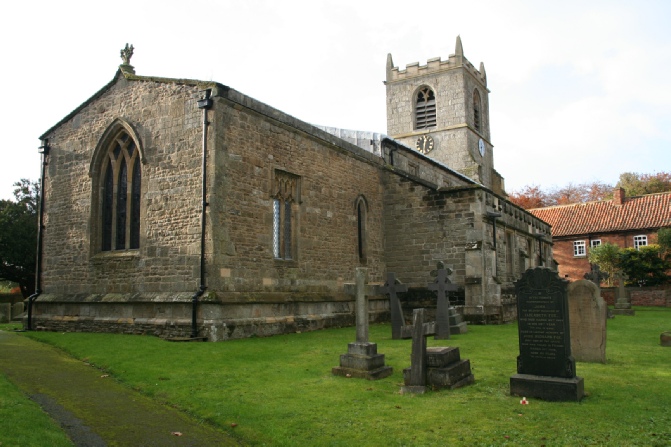St Giles Church

St Giles Church
The parish church of St Giles was built c. 1300 in a decorated style, and was partially reconstructed in 1845. It is a grade I listed parish church. The organ is by R Holt and dates back to 1847
Services are held every Sunday at 10am
Since the church was originally south facing the main entrance to the church, historically speaking, was situated at what we would consider today to be the “back.” Built into the tower a south facing door still exists though it’s unused. Known as the Monks’ Door, the present door is dated 1612. To the right of this in the stone work there is evidence of a door way that pre-dates this.
Elkesley’s church has a long history. The original building is likely to have been a wooden construction that was later replaced by something more substantial. In all probability there was a church on this site long before the Normans arrived. Parts of the present building date from the 13th century, though the greater part is 14th century in origin.
The church was originally known as “All Saints” and there are 1,255 ancient churches in England with this dedication, a number surpassed only by those dedicated to the Blessed Virgin Mary. After the English reformation and the growth of Protestantism, interest in the saints waned and people started referring to it simply as Elkesley church, its dedication like many others being forgotten. In the 19th century there was a revival of interest in the lives of the saints and it gained the name St Giles, probably because he was the patron saints of blacksmiths and there were two smithies one at either end of the village.
In the tower there are three ancient bells that are thought to have been cast in 1452. All bear a Latin
inscription, one is said to read “I have the name of Gabriel, who was sent from heaven.” Another is said to read, “This bell sounds in praise of Holy Mary” The third bell is dedicated to All Saints. According to Dawson, “Church Bells of Nottingham,” there are “only two rings of pre-reformation bells in the county, Elkesley and Scarrington.” Presumably for tuning purposes coins have been inserted into the Elkesley bells. These coins are said to be groats of about 1390 - 1420. Since 1921, when three clock faces were inserted into the tower, as a memorial to the men of Elkesley who died in the First World War, the bells have functioned as part of the clock. They ring today as a reminder of local lads and men who died in two world wars.
The Elkesley registers of births, marriages and deaths date from 1628 earlier records having been lost or never kept. The registers are more or less continues though they are disrupted by the English Civil War and the period of the Commonwealth. These records are to be seen on film in the Redford library. Whereas church registers often inform us of plague and the weather and give all kind of personal details, the Elkesley registers are rather bland and not very chatty. They tell however of love that has flourished from chance encounters with travellers on the Great North Road and of those that have died on their way. Even into modern times these records still hint of hidden secrets, a couple marrying in the 1940s from an obscure place called Bletchley Park.
The church is there to be enjoyed and in its simplicity it is a little jewel well worth a visit.